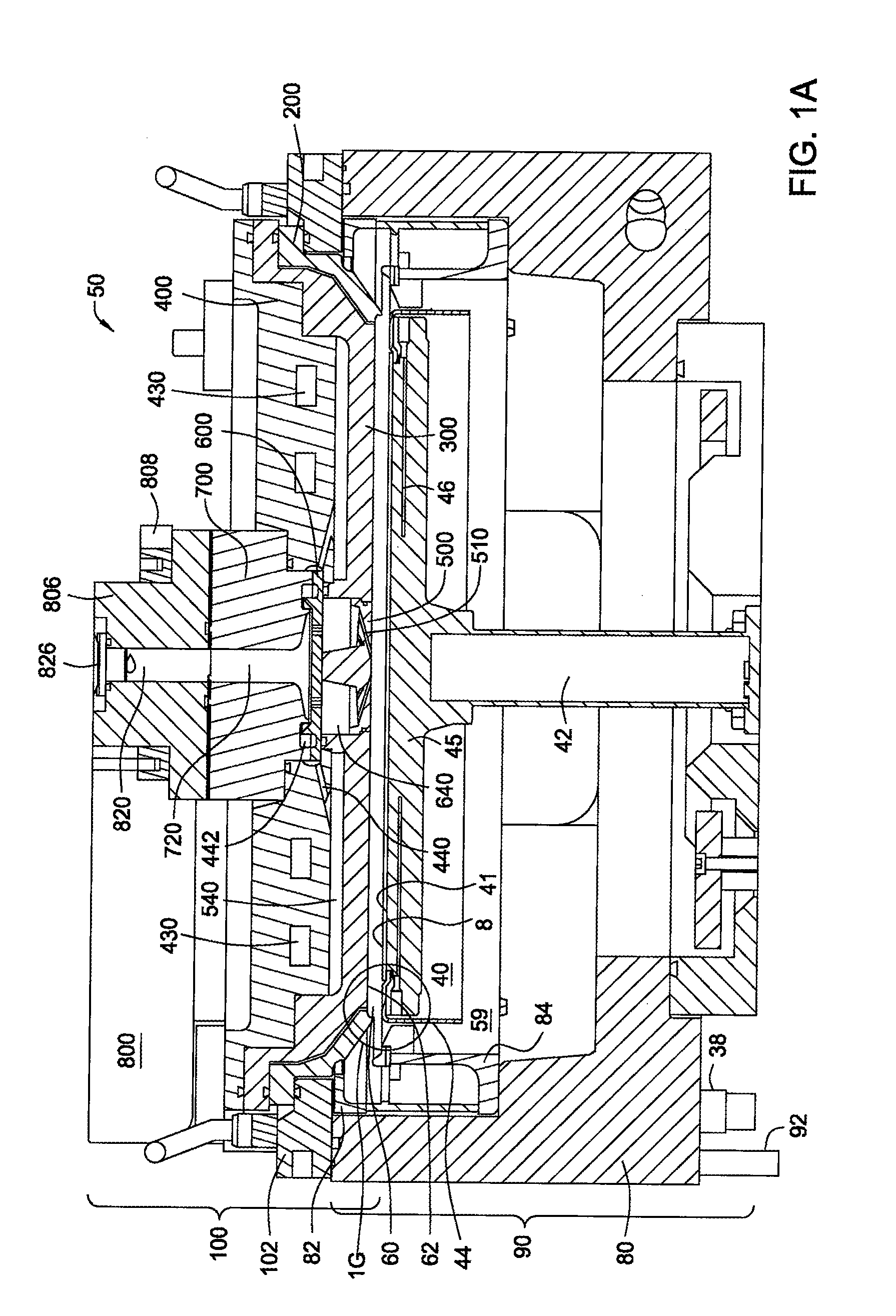Apparatus and process for plasma-enhanced atomic layer deposition
a technology of atomic layer deposition and apparatus, which is applied in the direction of chemical vapor deposition coating, solid-state devices, coatings, etc., can solve the problems of many limitations of pe-ald processes, slow process deposition rate, and inability to meet the requirements of production
- Summary
- Abstract
- Description
- Claims
- Application Information
AI Technical Summary
Benefits of technology
Problems solved by technology
Method used
Image
Examples
experiment 1
[0178] (DMPD)2Ru with constant flow of NH3 and intermediate plasma—The ruthenium precursor used during this experiment was bis(2,4-dimethylpentadienyl) ruthenium ((DMPD)2Ru). During the experiment, the pressure within the process chamber was maintained at about 2 Torr and the substrate was heated to about 300° C. An ALD cycle included the following steps. A ruthenium precursor gas was formed by passing a nitrogen carrier gas with a flow rate of about 500 sccm through an ampoule of (DMPD)2Ru heated at a temperature of about 80° C. The substrate was exposed to the ruthenium precursor gas with a flow rate of about 500 sccm and ammonia gas with a flow rate of about 1,500 sccm for about 3 seconds. The flow of the ruthenium precursor gas was stopped while the flow of the ammonia gas was maintained during a purge step. The purge step was conducted for about 2 seconds. Subsequently, a plasma was ignited to form an ammonia plasma from the ammonia gas while maintaining the flow rate. The RF ...
experiment 2
[0179] (MeCp)(EtCp)Ru with constant flow of NH3 and intermediate plasma—The ruthenium precursor used during this experiment was methylcyclopentadienyl ethylcyclopentadienyl ruthenium ((MeCp)(EtCp)Ru). During the experiment, the pressure within the process chamber was maintained at about 2 Torr and the substrate was heated to about 300° C. An ALD cycle included the following steps. A ruthenium precursor gas was formed by passing a nitrogen carrier gas with a flow rate of about 500 sccm through an ampoule of (MeCp)(EtCp)Ru heated at a temperature of about 80° C. The substrate was exposed to the ruthenium precursor gas with a flow rate of about 500 sccm and ammonia gas with a flow rate of about 1,500 sccm for about 3 seconds. The flow of the ruthenium precursor gas was stopped while the flow of the ammonia gas was maintained during a purge step. The purge step was conducted for about 2 seconds. Subsequently, a plasma was ignited to form an ammonia plasma from the ammonia gas while mai...
experiment 3
[0180] (MeCp)(Pv)Ru with constant flow of NH3 and intermediate plasma—The ruthenium precursor used during this experiment was methylcyclopentadienyl pyrrolyl ruthenium ((MeCp)(Py)Ru). During the experiment, the pressure within the process chamber was maintained at about 2 Torr and the substrate was heated to about 300° C. An ALD cycle included the following steps. A ruthenium precursor gas was formed by passing a nitrogen carrier gas with a flow rate of about 500 sccm through an ampoule of (MeCp)(Py)Ru heated at a temperature of about 80° C. The substrate was exposed to the ruthenium precursor gas with a flow rate of about 500 sccm and ammonia gas with a flow rate of about 1,500 sccm for about 3 seconds. The flow of the ruthenium precursor gas was stopped while the flow of the ammonia gas was maintained during a purge step. The purge step was conducted for about 2 seconds. Subsequently, a plasma was ignited to form an ammonia plasma from the ammonia gas while maintaining the flow r...
PUM
 Login to View More
Login to View More Abstract
Description
Claims
Application Information
 Login to View More
Login to View More - R&D
- Intellectual Property
- Life Sciences
- Materials
- Tech Scout
- Unparalleled Data Quality
- Higher Quality Content
- 60% Fewer Hallucinations
Browse by: Latest US Patents, China's latest patents, Technical Efficacy Thesaurus, Application Domain, Technology Topic, Popular Technical Reports.
© 2025 PatSnap. All rights reserved.Legal|Privacy policy|Modern Slavery Act Transparency Statement|Sitemap|About US| Contact US: help@patsnap.com



